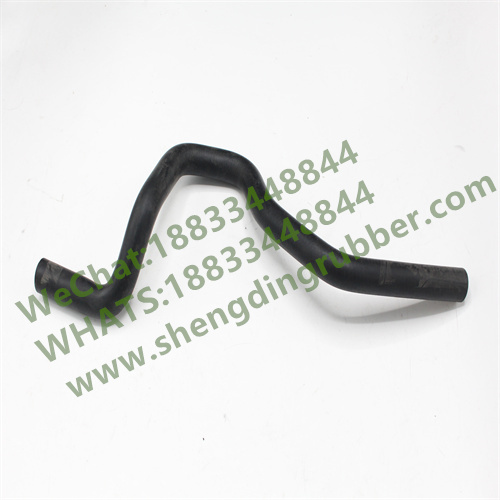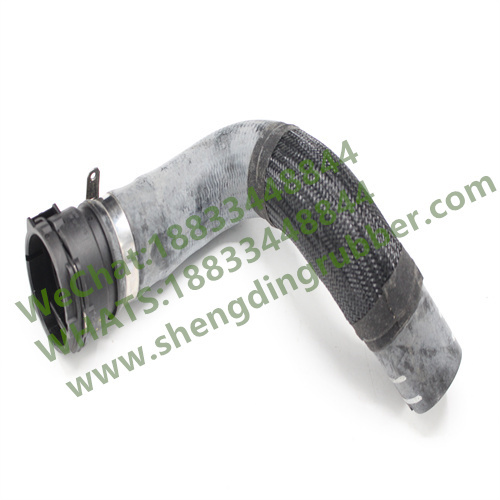Ultimate Radiator Hose Replacement Guide for Hyundai KIA: Enhance Performance with Expert Tips
Release Time:
Mar 10,2025
Ultimate Radiator Hose Replacement Guide for Hyundai KIA: Enhance Performance with Expert Tips Table of Contents 1. Introduction to Radiator Hoses 2. Importance of Radiator Hose Replacement 3. Signs Your Radiator Hose Needs Replacement 4. Essential Tools for the Job 5. Step-by-Step Radiator Hose Replacement Process 5.1 Step 1: Preparation and Safety Measur
Ultimate Radiator Hose Replacement Guide for Hyundai KIA: Enhance Performance with Expert Tips
Table of Contents
- 1. Introduction to Radiator Hoses
- 2. Importance of Radiator Hose Replacement
- 3. Signs Your Radiator Hose Needs Replacement
- 4. Essential Tools for the Job
- 5. Step-by-Step Radiator Hose Replacement Process
- 5.1 Step 1: Preparation and Safety Measures
- 5.2 Step 2: Accessing the Radiator Hose
- 5.3 Step 3: Removing the Old Hose
- 5.4 Step 4: Installing the New Hose
- 5.5 Step 5: Testing and Final Checks
- 6. Maintenance Tips for Radiator Hoses
- 7. Frequently Asked Questions (FAQs)
- 8. Conclusion
1. Introduction to Radiator Hoses
Radiator hoses play a critical role in your vehicle's cooling system by transporting coolant between the engine and the radiator. In Hyundai KIA models, these hoses are vital for maintaining optimal engine temperature, preventing overheating, and ensuring efficient performance. Understanding how to replace these hoses can save you time, money, and the frustration of unforeseen breakdowns.
2. Importance of Radiator Hose Replacement
Regular maintenance of radiator hoses is essential for several reasons:
- **Prevent Overheating**: A functioning radiator hose ensures that coolant circulates properly, preventing your engine from overheating.
- **Enhance Engine Efficiency**: A well-maintained cooling system improves overall engine performance and fuel efficiency.
- **Avoid Costly Repairs**: Replacing worn or damaged hoses can prevent leaks, which can lead to expensive repairs.
3. Signs Your Radiator Hose Needs Replacement
Recognizing when to replace your radiator hose is key to maintaining your vehicle. Here are some common signs:
- **Visible Cracks or Bulges**: Inspect your hoses regularly for any signs of wear, such as cracks, bulges, or fraying.
- **Leaking Coolant**: If you notice puddles of coolant under your vehicle, it may indicate a compromised hose.
- **Overheating Engine**: Frequent overheating can signal that your hoses are not functioning correctly.
4. Essential Tools for the Job
Before starting the replacement process, gather the following tools:
- **Wrenches and Socket Set**: For removing clamps and securing hoses.
- **Screwdrivers**: Flathead and Phillips for hose clamps.
- **Coolant**: Ensure you have the right type of coolant for your vehicle.
- **Rags**: For cleaning up spills and keeping your workspace tidy.
- **Safety Glasses and Gloves**: Protect yourself during the replacement process.
5. Step-by-Step Radiator Hose Replacement Process
5.1 Step 1: Preparation and Safety Measures
Before diving into the replacement, ensure your engine is cool to avoid burns. Disconnect the battery to prevent electrical issues, and wear safety glasses and gloves for protection.
5.2 Step 2: Accessing the Radiator Hose
Locate the radiator hose you need to replace. Depending on your Hyundai KIA model, you may need to remove other components for better access. Take note of how the hoses are routed for reinstallation.
5.3 Step 3: Removing the Old Hose
Use a screwdriver to loosen the clamps securing the old hose. Carefully slide the clamps away from the hose. Gently twist and pull the hose off the radiator and engine connection, allowing any remaining coolant to drain into a container.
5.4 Step 4: Installing the New Hose
Position the new radiator hose in place, ensuring it fits snugly onto both the radiator and engine. Secure it with clamps, tightening them evenly to avoid leaks. Make sure the hose is not pinched or kinked.
5.5 Step 5: Testing and Final Checks
After installation, refill the coolant system with the appropriate coolant mixture. Start the engine and let it run while checking for leaks around the new hose. Monitor the temperature gauge to ensure proper functionality.
6. Maintenance Tips for Radiator Hoses
To prolong the life of your radiator hoses, consider the following maintenance tips:
- **Regular Inspections**: Routinely check hoses for signs of wear and tear, especially before long trips.
- **Keep Coolant Levels Adequate**: Ensure your coolant levels are always topped up, as low levels can cause hoses to overheat.
- **Flush the Cooling System**: Every few years, have your cooling system flushed to prevent buildup that can damage hoses.
7. Frequently Asked Questions (FAQs)
1. How often should I replace my radiator hoses?
Most experts recommend inspecting and possibly replacing your radiator hoses every 4 to 5 years, or sooner if you notice signs of wear.
2. Can I replace the radiator hose myself?
Yes, replacing a radiator hose is a manageable DIY task if you have basic mechanical skills and the right tools.
3. What type of coolant should I use?
Check your vehicle's owner manual for the recommended coolant type, as Hyundai KIA models often require specific formulations.
4. Is it necessary to drain the coolant completely?
It is advisable to drain the coolant to prevent spills and ensure a clean replacement of the hoses.
5. What happens if I don't replace a damaged radiator hose?
Ignoring a damaged radiator hose could lead to severe engine overheating, costly repairs, and potential engine failure.
8. Conclusion
Replacing the radiator hose in your Hyundai KIA is a vital maintenance task that can significantly impact your vehicle’s performance and longevity. By recognizing the signs of wear, using the right tools, and following our comprehensive step-by-step guide, you can confidently tackle this job yourself. Regular maintenance and timely replacements will keep your engine cool and running efficiently, ensuring many miles of trouble-free driving ahead.
Key words:
What Else Might You Learn?







